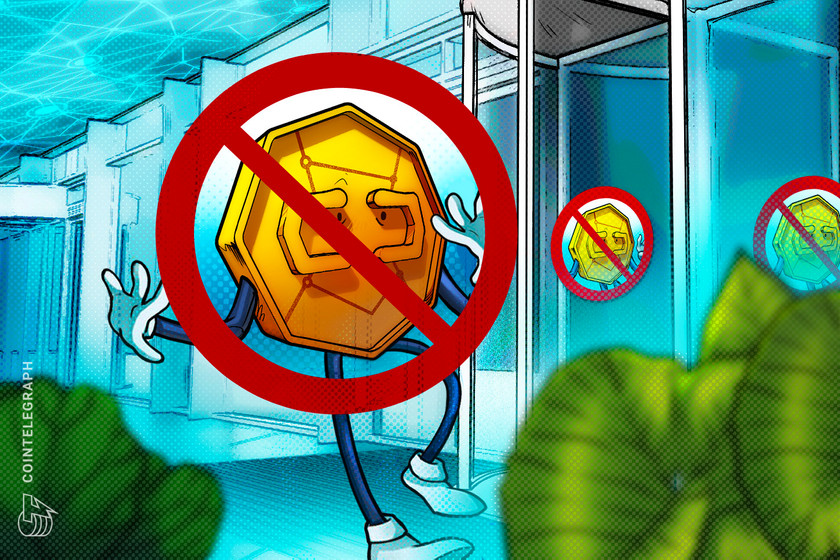Stress test? What Biden’s bank bailout means for stablecoins


A major stablecoin depegging event raised concerns about the stability of these assets amid a U.S. banking crisis. The result may have been an improvement in their position in traditional finance.
The collapse of Silicon Valley Bank (SVB), which suffered a bank run after revealing a hole in its finances over the sale of part of its inflation-hit bond portfolio, led to a depegging event for major stablecoins in the crypto sector, leaving many to wonder whether it was a simple stress test or a sign of weakness in the system.
The second-largest stablecoin by market capitalization, the Centre Consortium’s USD Coin (USDC), saw its value plunge to $0.87 after it was revealed that $3.3 billion of its over $40 billion in reserves was held at SVB and was, as a result, possibly lost. Coinbase seemingly exacerbated the crisis when it, a member of the Consortium, announced it was halting USDC-to-dollar conversions over the weekend.
As USDC lost its peg, so did decentralized stablecoins using it as a reserve asset. The most notable of which is MakerDAO’s Dai (DAI), a cryptocurrency-backed stablecoin that has well over half of its reserves in USDC.
Stablecoins restored their peg after the United States government stepped in and ensured depositors at SVB and Signature Bank would be made whole, in a move meant to stop other entities from suffering irreparable damage. According to United States President Joe Biden, taxpayers did not feel the burn of the bailout, and the traditional finance system was safe after the intervention.
Update thread on USDC
We were heartened to see the US government and financial regulators take crucial steps to mitigate risks extending from the fractional banking system.
100% of deposits from SVB are secure and will be available at banking open tomorrow.
— Jeremy Allaire (@jerallaire) March 12, 2023
The crisis, however, did not end there. While the U.S. government stepping in helped stablecoins recover their peg, many quickly pointed out that taxpayers would ultimately suffer the depositors’ bailout.
The banking crisis’ effects on digital assets
Financial institutions have since banded together to protect other banks, with investors and depositors raising questions about the stability of a number of other institutions, including Deutsche Bank.
Credit Suisse collapsed after investments in different funds went south and an unsubstantiated rumor on its impending failure saw customers pull out over 110 billion Swiss francs of funds in a quarter from it, while it suffered a loss of over 7 billion CHF.
Recent: The secret of pitching to male VCs: Female crypto founders blast off
The collapse saw the Swiss government broker an “emergency rescue” deal where Credit Suisse was acquired by rival UBS at a steep discount. Speaking to Cointelegraph, Jason Allegrante, chief legal and compliance officer at blockchain infrastructure company Fireblocks, said that the banking crisis was partly caused by rising interest rates exposing banks with large portfolios of low-interest-rate bonds to risk.
Per Allegrante, the role of the liquidity coverage ratio, a regulatory requirement forcing banks to hold a certain amount of “high-quality liquid assets” to prevent these liquidity crunches, is not being openly discussed.
He said it’s “entirely possible we are in the early stages of a nationwide run on regional banks.” If this happens, he said, there will not only be widespread regional bank failure but there will “likely be further consolidation and concentration of deposits in a handful of large, systematically important banks.”
He added that such a crisis would put pressure on regional banks to sell assets to meet liquidity needs and could ultimately lead to more bank failures. Allegrante added that this would have “far-reaching consequences for the digital asset industry in the United States and abroad.”
Becky Sarwate, spokesperson and head of communications at cryptocurrency exchange CEX.io, told Cointelegraph that the crisis could be a boon for digital assets, saying:
“One thing is clear: Similar to how Bitcoin blossomed from the wreckage of the 2008 financial crisis, the failure of institutions like SVB and Signature Bank is compelling evidence for diversification across multiple investment verticals.”
Sarwate added that when “traditional pathways prove equally volatile from the perspective of a crypto curious participant, it throws the inherent risk of any market participation into relief.” She added that while digital assets lack some of the protections seen in traditional finance, they “offer an alternative set of benefits that, in our current climate, could be appealing to nervous investors.”
Investors holding onto stablecoins and earning yield through them, however, may have believed they were already diversifying and sidestepping the market rout that was occurring. Circle, the issuer of USDC, suggested the depeg event was a “stress test” that the system weathered.
Mitigating risk for stablecoins
If the Federal Deposit and Insurance Corporation (FDIC) were to extend insurance to crypto-related institutions, it could alleviate concerns about the security of digital assets under their custody. That same insurance helped USDC and other stablecoins recover their peg after the collapse of SVB, making a strong case for FDIC insurance to boost crypto adoption.
While that insurance typically only goes up to $250,000, the FDIC opted to make every depositor whole, essentially protecting Circle’s $3.3 billion in reserves held at the bank. Speaking to Cointelegraph, a spokesperson for the stablecoin issuer said that the events highlighted “how there’s a co-dependency — not a conflict — in banking and digital finance.”
The spokesperson added that just as the 2008 global financial crisis led to comprehensive banking reforms, it may be “well past time that the U.S. acts on federal payment stablecoin legislation and federal oversight of these innovations.” The spokesperson added:
“The emphasis here is the importance of shoring up markets and confidence, protecting consumers and ensuring that outcomes, in the long run, prove that the stress test could have been weathered by traditional financial firms and Circle.”
To Circle, a stable U.S. banking system that ensures deposits are safe and accessible is essential to the financial system, and the U.S. government’s actions to make depositors whole demonstrated their “recognition of this fact.” The safety and soundness of the banking system are critical to dollar-backed stablecoins, the firm added.
Circle has revealed that it has since moved the cash portion of USDC’s reserve to Bank of New York Mellon, the world’s largest custodian bank with over $44 trillion in assets under custody, with the exception of “limited funds held at transaction banking partners in support of USDC minting and redemption.”
The firm added it has “long advocated for regulation such that we can become a full reserve, federally supervised institution.” Such a move would insulate its “base layer of internet money and payment systems from fractional reserve banking risk,” the spokesperson said, adding:
“A federal pathway for legislation and regulatory oversight allows for the U.S. to be represented and have a seat at the table as the future of money is being discussed around the world. The time to act is now.”
Commenting on the depeg, Lucas Kiely, chief investment officer of Yield App, noted that what happened can be “largely attributed to fears around liquidity,” as most stablecoins are “essentially an IOU note backed by securities that holders don’t have a lien on.”
Per Kiely, stablecoins have “been sold as asset-backed instruments, which like any other asset carry investment risk.” Danny Talwar, head of tax at crypto tax calculator Koinly, said that USDC and Dai may “temporarily suffer from a lack of confidence over the short to medium term following the mini-bank run.”
CEX.io’s Sarwate, however, said the confidence in these stablecoins “has gone unchanged,” as both Dai and USDC “retreated back to their reflections of the U.S. dollar and resumed all prior uses they enjoyed before the depegging event.”
To members of the decentralized autonomous organization (DAO) that governs Dai, MakerDAO, confidence was seemingly unaffected. A recent vote has seen members of the DAO opt to keep USDC as the primary collateral for the stablecoin over diversifying with Gemini Dollar (GUSD) and Paxos Dollar (USDP) exposure.
Given USDC’s move of the cash portion of its reserves to a stronger custodian, the depegging event may have simply strengthened both stablecoins after a short period of panic.
Leveling the playing field
That strengthened position, according to Koinly’s Talwar, could also come as cryptocurrency startups and exchanges search for alternative banking providers, although the “de-banking of crypto businesses could seriously harm the sector and innovation in blockchain-based technologies” if they fail to find alternatives.
In the medium term, Talwar said, the collapse of cryptocurrency-friendly banks “will compound with the more crypto-native collapses from the past year, resulting in a challenging environment for blockchain innovation to thrive within the United States.”
Yield app’s Kiely said that the U.S. government’s recent bailout was different from the one seen in the global financial crisis, although it raises “questions over whether there needs to be an adjustment in the supervisory guidelines to address interest rate risk.”
The Fed’s bailout, he said, could be removing incentives for banks to manage business risks and send a message they can “lean on the government’s support if customer funds are mismanaged, all with no alleged cost to the taxpayer.”
Recent: How a TikTok ban in the US could affect the crypto industry
As for stablecoins, Talwar said he sees a need for more stablecoin options, even though the launch of euro-backed stablecoins helped in this regard. CEX.io’s Sarwate noted that the U.S. banking and stablecoin crisis helped “level the playing field between traditional finance and crypto.”
While crypto is still a nascent industry, she said, there’s “potential within the space for visionaries to lead by example and carve out an alternative to speculative investing. In the long term, this could help yield a more balanced system.”
In the typical crypto ethos, players in the space are already finding ways to mitigate risks associated with the traditional financial system. While U.S. regulators warn against crypto, the sector moves to strengthen its position in the financial world.























